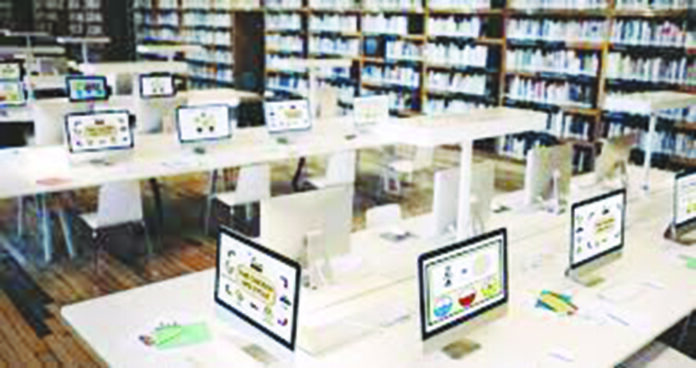The writing materials and libraries have undergone various changes from the stone age’s bark leaves, clay tablets to papyrus, and parchments to the presents papers. All writing materials were preserved in the libraries, which have a long and rich history dating back to ancient times. The function and role of libraries have evolved from time to time. Still, their mission remains to serve the community through its valuable resources for access to knowledge and information. With the advent and rise of the digital age, libraries have adapted to incorporate new technologies and provide access to digital resources and physical materials. The physical contents are now transforming into digital objects; online databases, e-books and digital archives have become increasingly common in almost all libraries. The age of clay tablets is converting to e-tablets and people’s tastes are changing enormously.
Similarly, libraries are experiencing new tastes in the 21st-century era. Initially, Project Gutenberg and now Google’s Library projects have made an enormous amount of information available online. Now libraries have not been confined to the four walls but have rushed to the potential customers, whether present or old alums. Libraries of today’s age are democratizing access to knowledge, despite the wealth of information available on the Internet. Libraries provide curated and authoritative sources of information and access to those resources, that people may need help finding online. Libraries of modern eras serve as community hubs and provide spaces for people to gather, learn and connect. They offer various programs and services, from literacy programs to job search assistance and cultural events.
Today libraries are great sources for education, research and community engagement, adapting and evolving to meet the changing needs of society. Libraries are embracing the common learning models and providing a flexible and supportive environment for learning and knowledge creation; such activities ensure that libraries remain an essential resource for education and lifelong learning in the digital age. Libraries in olden ages were repositories of information, but now they have become great sources for exploration, discovery and creativity; these are places where learners from different spheres come together to share ideas, collaborate on projects and engage in a range of learning activities that extend beyond traditional classroom activities.
Libraries of the present era are no longer limited to the physical space within their walls. Modern libraries offer various services outside their walls, both online and in-person; some useful services are online databases through Virtual Private Networks, and one can access e-books, audiobooks, e-journals and other digital content; these services can be accessed from anywhere anytime with an internet connection. Some libraries of the 21st century offer mobile library services which bring library materials to community centres, schools and retirement homes. Libraries in developed countries offer community outreach programs to connect with underserved populations to promote literacy and education, like story-times, book clubs, author talks, etc. In the 21st century, all libraries can only fulfil the demands of potential customers with a limited budget; in this case, they have partnered with other organizations to offer services outside the library walls. Online programmes are yet another good initiative of modern libraries; many libraries offer online programmes for remote users, such as virtual author talks, online book clubs and workshops via Zoom. These programmes can be accessed from anywhere via the Internet.
Libraries in the 21st century have adopted innovative technology to reach a wider audience and provide access to information in more efficient ways; for this, they have adopted emerging technologies like Online Public Access Catalogs (OPAC)
Libraries in the 21st century have adopted innovative technology to reach a wider audience and provide access to information in more efficient ways; for this, they have adopted emerging technologies like Online Public Access Catalogs (OPAC) because, in an earlier age, people used a card catalogue to find their desired information, now libraries have transformed their physical and electronic material via online catalogue where one can find the desired information in both physical and electronic formats. The libraries of the present age have made it easier for librarians to manage the circulation of material for users to borrow and return items; for this, they have designed an Automated Circulation System from which one can check in, check out, and renew library material in sophisticated ways. In modern libraries, many developed countries have adopted Digital Preservation technologies which preserve and make accessible rare and fragile materials. These technologies include digital imaging, digital conversion, digital storage and so on.
Some libraries in developed countries have adopted cutting-edge technologies to reach out to their potential customers; a few worth-mentioning technologies are Artificial Intelligence, cloud computing, Radio Frequency Identification (RFID), Virtual and Augmented Reality, Open Access, Digital Humanities, 3D Printing, mobile applications, Big Data and Internet of Things etc. These technologies offer vital services to potential customers and make them convenient with the latest information. In short, libraries of the present eras are finding new and innovative ways to fulfil and satisfy the needs of their present and retrospective patrons.






















